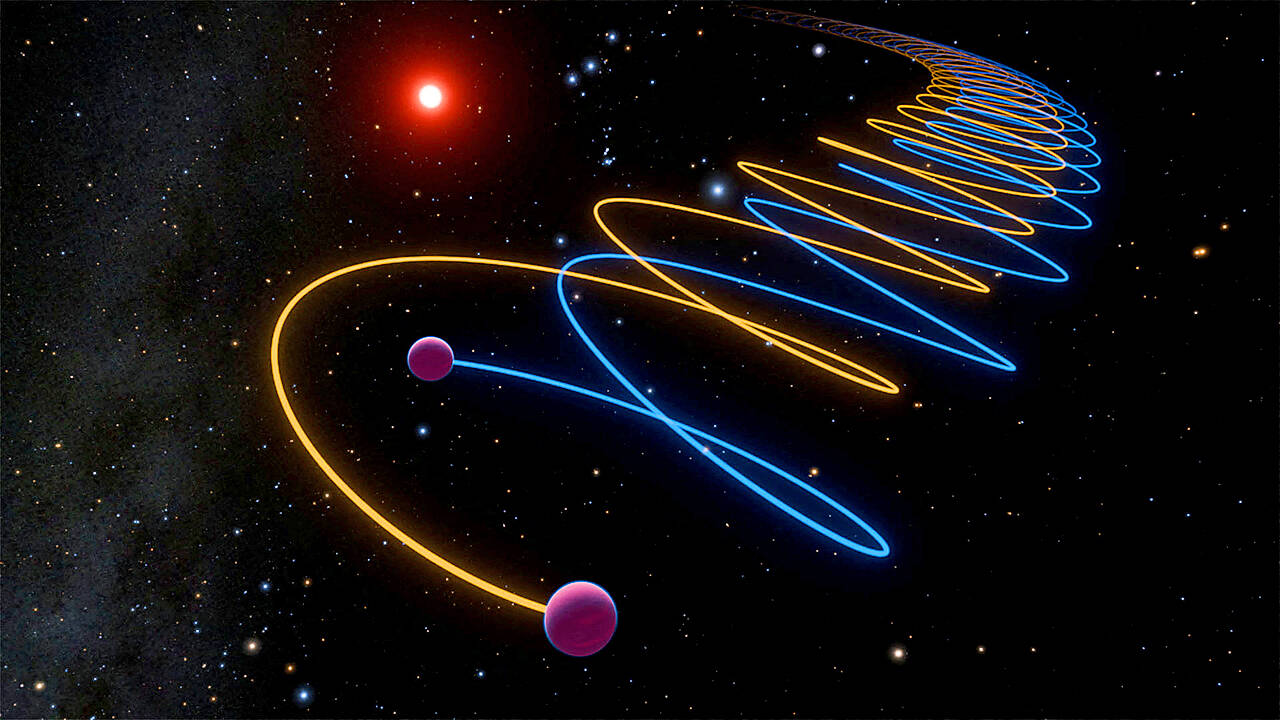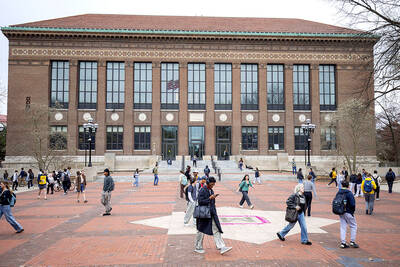In 1995, astronomers confirmed the discovery for the first time of a brown dwarf, a body too small to be a star and too big to be a planet — sort of a celestial tweener. It turns out that was not the full story.
Researchers have taken a fresh look at that brown dwarf and learned that it is not a single brown dwarf, but rather two of them orbiting astonishingly close to each other while circling a small star. That was documented in two new studies using telescopes in Chile and Hawaii.
The brown dwarfs are gravitationally locked to each other in a binary system, an arrangement commonly observed among stars. So the brown dwarf that three decades ago was named Gliese 229B is now recognized as Gliese 229Ba, with a mass 38 times greater than our solar system’s largest planet, Jupiter, and Gliese 229Bb, with a mass 34 times greater than Jupiter.

Photo: K. Miller, R. Hurt (Caltech / IPAC) via Reuters
They are 19 light-years from our solar system — rather close in cosmic terms — in the constellation Lepus.
Binary brown dwarfs are rare. The two orbit each other every 12 days at a distance of only 16 times the separation between Earth and the moon. Only one other pair of brown dwarfs are known to orbit as close to each other.
Brown dwarfs could be considered wannabe stars that during their formative stages did not reach the mass necessary to ignite nuclear fusion at their core like a star, but they are more massive than the biggest planets.
“A brown dwarf is an object that fills the gap between a planet and a star. They are formally defined as objects that can burn a heavy form of hydrogen, called deuterium, but not the most common basic form of hydrogen,” said Sam Whitebook, a graduate student in California University of Technology’s (Caltech) division of physics, mathematics and astronomy and lead author of one of the studies, published in the Astrophysical Journal Letters.
“In practice, this means they range in mass from approximately 13 to 81 times the mass of Jupiter. Because they can’t fuse hydrogen, they can’t ignite the fusion channels that power most stars. This causes them to just glow dimly as they cool down,” Whitebook said.
Until Gliese 229B’s discovery, the existence of brown dwarfs had only been hypothesized, but there were anomalies about Gliese 229B, particularly after its mass was measured at about 71 times that of Jupiter.
“This didn’t make any sense since an object of that mass would be much brighter than Gliese 229B,” said Caltech astronomer Jerry Xuan, lead author of one of the studies, published in the journal Nature. “In fact, some models predict that objects with masses above 70 Jupiter masses fuse hydrogen and become stars, which was clearly not happening here.”
The new observations discerned two separate brown dwarfs. They orbit a common type of star called a red dwarf with a mass about six-tenths of our sun. While both brown dwarfs are more massive than Jupiter, their diameter is smaller than the gas giant planet because they are more dense.
“We still don’t really know how different brown dwarfs form, and what the transition between a giant planet and a brown dwarf is. The boundary is fuzzy,” Xuan said. “This finding also shows us that brown dwarfs can come in weird configurations that we were not expecting. This goes to show how complex and messy the star formation process is. We should always be open to surprises.”

A Chinese scientist was arrested while arriving in the US at Detroit airport, the second case in days involving the alleged smuggling of biological material, authorities said on Monday. The scientist is accused of shipping biological material months ago to staff at a laboratory at the University of Michigan. The FBI, in a court filing, described it as material related to certain worms and requires a government permit. “The guidelines for importing biological materials into the US for research purposes are stringent, but clear, and actions like this undermine the legitimate work of other visiting scholars,” said John Nowak, who leads field

Brazil, the world’s largest Roman Catholic country, saw its Catholic population decline further in 2022, while evangelical Christians and those with no religion continued to rise, census data released on Friday by the Brazilian Institute of Geography and Statistics (IBGE) showed. The census indicated that Brazil had 100.2 million Roman Catholics in 2022, accounting for 56.7 percent of the population, down from 65.1 percent or 105.4 million recorded in the 2010 census. Meanwhile, the share of evangelical Christians rose to 26.9 percent last year, up from 21.6 percent in 2010, adding 12 million followers to reach 47.4 million — the highest figure

Swedish campaigner Greta Thunberg was deported from Israel yesterday, the Israeli Ministry of Foreign Affairs said, the day after the Israeli navy prevented her and a group of fellow pro-Palestinian activists from sailing to Gaza. Thunberg, 22, was put on a flight to France, the ministry said, adding that she would travel on to Sweden from there. Three other people who had been aboard the charity vessel also agreed to immediate repatriation. Eight other crew members are contesting their deportation order, Israeli rights group Adalah, which advised them, said in a statement. They are being held at a detention center ahead of a

‘THE RED LINE’: Colombian President Gustavo Petro promised a thorough probe into the attack on the senator, who had announced his presidential bid in March Colombian Senator Miguel Uribe Turbay, a possible candidate in the country’s presidential election next year, was shot and wounded at a campaign rally in Bogota on Saturday, authorities said. His conservative Democratic Center party released a statement calling it “an unacceptable act of violence.” The attack took place in a park in the Fontibon neighborhood when armed assailants shot him from behind, said the right-wing Democratic Center, which was the party of former Colombian president Alvaro Uribe. The men are not related. Images circulating on social media showed Uribe Turbay, 39, covered in blood being held by several people. The Santa Fe Foundation